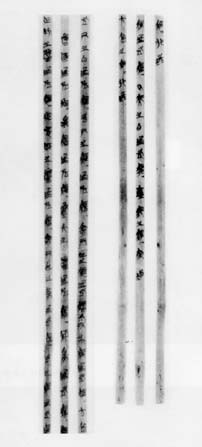

|
|
||||||||||||||||||||||||||||
|
Marquis Yi's four-chambered tomb
|
||||||||||||||||||||||||||||
|
The Warring States Period (475-221 BC) was a time of turmoil and violence, with constant warfare between the regional states, but it was also a time of great intellectual and artistic activity, when the intellectual traditions of Confucianism, Daoism, and Legalism originated. As military conflict became more frequent and more deadly, one by one the smaller states were conquered and absorbed by the half dozen largest ones. One of the more successful such states was Chu, based in the middle reaches of the Yangzi River. It defeated and absorbed fifty or more small states, eventually controlling a territory as extensive as the Shang or Western Zhou dynasties at their heights. Evidence of the distinctive style of Chu court workshops can be seen in the objects found in the tomb of Marquis Yi. Dated around 430 BC, this tomb is located in present-day Hubei Province (review map). Inscriptions [included below for the Teacher's Guide] on the bronzes found at the site identify the tomb as that of a marquis of the state of Zeng, a small state then under the domination of Chu. The tomb is 21m long, 16.5m wide, and 13m deep, making it 220 square meters in area. It has four chambers. The eastern chamber contained the marquis's lacquered double coffin, the coffins of eight young women, and a dog in its own coffin. The chamber also contained weapons, a chariot, and many personal items, including furniture, a zither, silk, and vessels -- but no bronze vessels. The central chamber seems to have been a ceremonial hall, with a large set of bronze bells and other instruments, as well as bronze ritual vessels. The northern chamber served as an armory and storeroom, the western chamber, where thirteen more young women were buried, as servants' quarters.
|
||||||||||||||||||||||||||||
What do you notice about the layout of this tomb compared to earlier ones? What changes in beliefs about the afterlife might this reflect?
Altogether Marquis Yi's tomb contained:
What do you notice about the variety and amount of burial goods compared with earlier tombs? |
||||||||||||||||||||||||||||
|
||||||||||||||||||||||||||||
|
This jade chain is formed of moveable parts joined by links. Four of the links are partly of gold and can be detached; eight are created from openwork carving and can't be undone. In addition to the openwork carving, the chain is also decorated with relief carvings of birds and dragons or snakes. The chain can be separated into five pieces or joined into one, folded or opened.
How difficult do you think it is to carve openwork in jade? How do you think this was worn?
|
||||||||||||||||||||||||||||
|
Jade chain Length: 48cm
|
||||||||||||||||||||||||||||
|
Some of the bamboo slips found in the tomb list the mourners at the funeral and the objects placed in the grave. Why is the discovery of writing on bamboo slips important?
|

|
|||||||||||||||||||||||||||
Inscribed bamboo
slips
|
||||||||||||||||||||||||||||
|
Go on to view some of the objects from this tomb: |
|
 |
 |
| Musical instruments | Bronze vessels |
 |
|
| Lacquer ware | Gold objects |